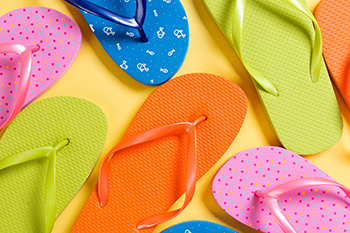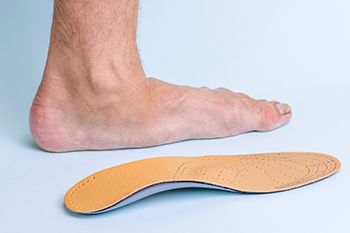
A common symptom many women suffer from during pregnancy is swollen feet. This is the result of more fluids that are needed for the growing baby and it can be uncomfortable as the pregnancy progresses. There are simple methods that can be implemented that may help to reduce swollen feet. These include drinking plenty of water daily and wearing comfortable shoes that do not constrict the feet. Reducing salt intake can make a profound difference in controlling swollen feet and research has shown blood circulation may be improved when a gentle exercise routine is practiced regularly. Many women find mild relief when their feet are elevated throughout the day and this can give the body a chance to relax. Swollen feet during pregnancy are an uncomfortable but temporary condition and if you would like more information about how to control this, please consult a podiatrist.
Pregnant women with swollen feet can be treated with a variety of different methods that are readily available. For more information about other cures for swollen feet during pregnancy, consult with Dr. Lubrina Bryant from District Podiatry, PLLC. Our doctor will attend to all of your foot and ankle needs.
What Foot Problems Can Arise During Pregnancy?
One problem that can occur is overpronation, which occurs when the arch of the foot flattens and tends to roll inward. This can cause pain and discomfort in your heels while you’re walking or even just standing up, trying to support your baby.
Another problem is edema, or swelling in the extremities. This often affects the feet during pregnancy but tends to occur in the later stages.
How Can I Keep My Feet Healthy During Pregnancy?
If you have any questions please feel free to contact our office located in Washington, D.C . We offer the newest diagnostic and treatment technologies for all your foot and ankle needs.

Flip-flops can be stylish, breathable, and easy to slip on, but this flimsy footwear can be harmful to the feet. Just wearing flip-flops on city streets can cause grime to coat the feet. If you develop even a small cut on your foot, bacteria can enter and cause an infection. Such an infection can enter your bloodstream and if left untreated, cause dire consequences. The feet and toes also work extra hard to keep flip-flops securely on. It is best to keep flip-flop wearing to a minimum. Sandals with a back strap are good for trips to the beach, swimming pools, and gym areas. Well-fitting closed-toed shoes are best for foot protection. If you develop problems from wearing flip-flops or want further suggestions for the best footwear for your feet, see a podiatrist who is trained in everything related to the feet and ankles.
Flip-flops can cause a lot of problems for your feet. If you have any concerns about your feet or ankles, contact Dr. Lubrina Bryant from District Podiatry, PLLC. Our doctor will assist you with all of your foot and ankle needs.
Flip-Flops and Feet
Flip-flops have managed to become a summer essential for a lot of people. While the shoes may be stylish and easy to slip on and off, they can be dangerous to those who wear them too often. These shoes might protect you from fungal infections such as athlete’s foot, but they can also give you foot pain and sprained ankles if you trip while wearing them.
When Are They Okay to Wear?
Flip-flops should only be worn for very short periods of time. They can help protect your feet in places that are crawling with fungi, such as gym locker rooms. Athlete’s foot and plantar warts are two common fungi that flip-flops may help protect your feet against.
Why Are They Bad for My Feet?
These shoes do not offer any arch support, so they are not ideal for everyday use. They also do not provide shock absorption or heel cushioning which can be problematic for your feet. Additionally, you may suffer from glass cuts, puncture wounds, and stubbed toes since they offer little protection for your feet.
More Reasons Why They Are Bad for Your Feet
If you have any questions, please feel free to contact our office located in Washington, D.C . We offer the newest diagnostic and treatment technologies for all your foot care needs.

Many people who have flat feet avoid walking and exercising, which can make the body uncomfortable as a result of a flattened or little arch. The arch acts as a shock absorber, and with flat feet, the gait is different from people with normal arches. The majority of children are born with flat feet, but the arch generally develops in the teenage years. Wearing shoes that do not fit correctly may increase discomfort felt from flat feet, and custom-made orthotics are often prescribed to help the feet to absorb shock. There are various types of flat feet. Flexible flat feet are noticeable as the foot lies flat on the floor while standing, but the arch appears when sitting down. This foot condition may cause the feet to ache, and mild relief may be felt when specific stretches are frequently performed. In rigid flat feet, the arch is permanently flattened and cannot be seen while standing or sitting down. If you have flat feet of either type, please schedule a consultation with a podiatrist who can guide you toward relief treatments.
Flatfoot is a condition many people suffer from. If you have flat feet, contact Dr. Lubrina Bryant from District Podiatry, PLLC. Our doctor will treat your foot and ankle needs.
What Are Flat Feet?
Flatfoot is a condition in which the arch of the foot is depressed and the sole of the foot is almost completely in contact with the ground. About 20-30% of the population generally has flat feet because their arches never formed during growth.
Conditions & Problems:
Having flat feet makes it difficult to run or walk because of the stress placed on the ankles.
Alignment – The general alignment of your legs can be disrupted, because the ankles move inward which can cause major discomfort.
Knees – If you have complications with your knees, flat feet can be a contributor to arthritis in that area.
Symptoms
Treatment
If you are experiencing pain and stress on the foot you may weaken the posterior tibial tendon, which runs around the inside of the ankle.
If you have any questions please feel free to contact our office located in Washington, D.C . We offer the newest diagnostic and treatment technologies for all your foot and ankle needs.

A broken foot often requires immediate medical attention. It generally causes severe pain and discomfort and can happen for a variety of reasons. These include a foot injury, twisting it well beyond its normal range of motion, or an accident. Symptoms include swelling, bruising, and difficulty bearing weight. If the foot is severely fractured, a bone may protrude from the skin, appearing to be displaced. A mildly broken foot may be confused with a sprain, because the two types of injuries share similar symptoms. Some patients hear a popping sound, which is often indicative of a broken foot, rather than a sprained ankle. A proper diagnosis can confirm a broken foot by having an X-ray taken. Treatment can begin by having a cast put on the affected foot, which is helpful in providing stability as the healing process occurs. Crutches are often recommended to use while the foot is in a cast, helping the patient to remain mobile. If you have broken your foot, please call a podiatrist’s office as quickly as possible for proper treatment techniques.
A broken foot requires immediate medical attention and treatment. If you need your feet checked, contact Dr. Lubrina Bryant from District Podiatry, PLLC. Our doctor can provide the care you need to keep you pain-free and on your feet.
Broken Foot Causes, Symptoms, and Treatment
A broken foot is caused by one of the bones in the foot typically breaking when bended, crushed, or stretched beyond its natural capabilities. Usually the location of the fracture indicates how the break occurred, whether it was through an object, fall, or any other type of injury.
Common Symptoms of Broken Feet:
Those that suspect they have a broken foot shoot seek urgent medical attention where a medical professional could diagnose the severity.
Treatment for broken bones varies depending on the cause, severity and location. Some will require the use of splints, casts or crutches while others could even involve surgery to repair the broken bones. Personal care includes the use of ice and keeping the foot stabilized and elevated.
If you have any questions please feel free to contact our office located in Washington, D.C . We offer the newest diagnostic and treatment technologies for all your foot and ankle needs.